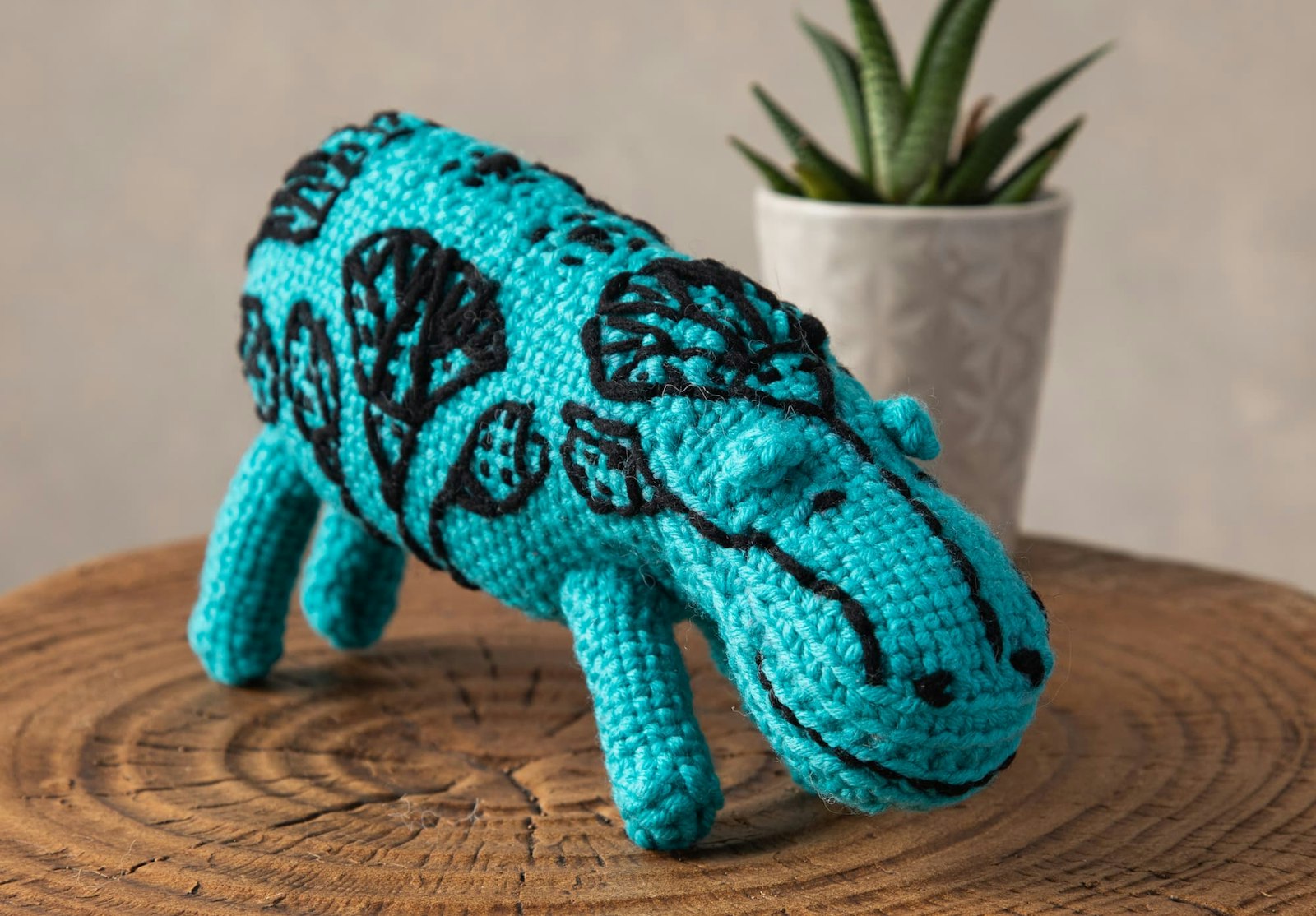Right now I can't get enough of the latest internet sensation, Moo Deng, the super cute pygmy hippo recently born in the Khao Kheow Open Zoo in Thailand. Moo, if you've not seen photos of her, is absolutely adorable. Thinking about Moo Deng made me remember a lovely article by Margeret Stump from the March/April 2022 issue of Handwoven where she gives the history of William, the unofficial mascot of the Metrolpolitan Museum of Art, and talks about her design process for making her own William. As a bonus for All Access subscribers we've got the article here (not an All Access subscriber? Learn more about the program here). —Christina
If you have visited the Metropolitan Museum of Art in New York City (or browsed the website), you have probably run across one of the most popular artifacts in its collection, an 8-inch faience hippo from ancient Egypt named William. William was created around 1961–1878 BCE and was unearthed from an Egyptian tomb in 1910. He was donated to the museum in 1917 and has spent the last one-hundred-plus years as one of the Met’s cutest, most beloved exhibits. After admiring William, I had to ask, “What makes William so universally loved, and how can I capture that in pin-loom weaving?”
I was given a tiny replica of William when I was young. When I started creating pin-loom animals several years ago, I used this small ceramic version as a starting place for designing the pin-loom hippos in my book Adorable Beasts: 30 Pin Loom Animals + 4 Playscapes. I gave my hippos Egyptian names, Masud and Nefret, as an homage to their famous cousin William. William’s popularity was first established in an article by Captain H. M. Raleigh in the British magazine Punch, published in 1931 and republished in the museum’s Art Bulletin that same year. With a lighthearted tone, the author wrote that his family owned a framed color print of the Metropolitan Museum of Art hippo and that they had named him William. The author noted that the whole family had come to adore William, in whom they found a sense of inscrutability and mystery as well as friendliness. Because of William’s ambiguous expression, they found that he was useful as an oracle, seeming to warn them away from poor decisions. As a result of the article, the small ceramic hippo gained a large following and maintained the name given him by the Raleigh family so that the current museum display label reads: “Hippopotamus (‘William’).”
 William, the unofficial mascot of the Metropolitan Museum of Art. Photo courtesy of the Metropolitan Museum of Art.
William, the unofficial mascot of the Metropolitan Museum of Art. Photo courtesy of the Metropolitan Museum of Art.
According to Isabel Stünkel, Associate Curator of the Department of Egyptian Art, the ancient Egyptian hippo was placed in a tomb around four thousand years ago. She noted that the lotus buds and flowers on William’s side symbolize rebirth. Because the hippo lived in the River Nile, the source of life in ancient Egypt, it also represented life and strength. It was thought to magically transfer all its positive powers of life and rejuvenation to the tomb owner, helping the occupant to be reborn. I like to think about the fact that William also represented a real animal living in the Nile River who would often be covered with leaves and flowers when coming to the surface.

